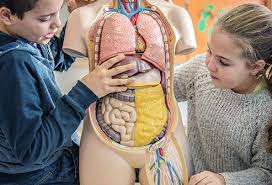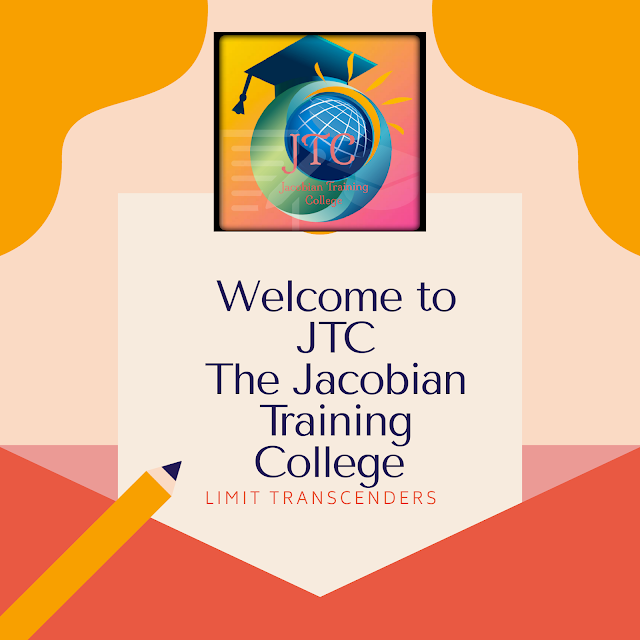Digestive System
Digestive System
Animals depend solely on the food synthesized by plants since they cannot manufacture their own food. This food substances obtained directly or indirectly from plants need to be broken down into simple and diffusible form for use by animals by a complex system.
These systems are called digestive system. Digestive system includes the alimentary canal and organs which aids the process of digestion. Digestion is the breakdown of large insoluble food molecules into small water-soluble food molecules so that they can be absorbed into the watery blood plasma.
There are of two types of digestive tracts namely Incomplete and Complete tracts.
Incomplete digestive tract has only one opening (mouth) to the outside world which serves for ingestion and egestion.
Coelenterates(Hydra) and Flatworms(Planaria) are examples of organisms with this tracts. Complete tracts or the gastrointestinal tract has two openings called mouth and anus. The mouth serves for ingestion and the anus for egestion.
Note: In incomplete tract, ingested food particles mixes with outgoing undigested food materials.
ALIMENTARY TRACTS OF SOME ANIMALS
PLANARIA
It is a free living flatworm that feeds on zooplankton. It has an incomplete digestive system with a single opening(mouth). The mouth opens into a short buccal cavity which leads into the pharynx.
The pharynx sucks in food and leads to the intestine. Digestive enzymes are secreted from the mouth to begin external digestion. The intestine has three main branches,one anterior and two posterior with each giving rise to lateral branches forming gastrovascular cavity.
This structure branches throughout the body allowing nutrients from food to reach all body parts. It is lined with phagocytic cells, glandular storage cells and gland cells.
EARTHWORM
This has a complete alimentary tract with two openings: the mouth which serves for ingestion and anus which serves for egestion(removal of undigested food).
The mouth is held in place by a lip-like structure called prostomium and leads to the buccal cavity. The sucking action of the pharynx takes in food into the buccal cavity. The prostomium helps by arranging the fold substance in position for ingestion.
The salivary gland of the pharynx contains mucin and a proteolytic enzyme. The mucin helps in lubrication of food substances and the proteolytic enzyme helps to digest protein to peptones which is then moved to the Crop by oesophagus.
The crop is a relatively thin walled which act as a temporary storage chamber for food. The crop leads into a grindular stomach(Gizzard) where the surface area of food particles is increased as they are broken down into simple and absorbable form by cuticle and small pebbles of stones ingested along with the food.
Once through the gizzard, food continues through the intestine for digestion and absorption. The intestine secretes pepsin to digest proteins to peptones,amylase to digest carbohydrates to maltose,lipase to digest fats and oil. The undigested food materials are removed through the Caecum, Rectum and finally through the anus.
HUMAN
The first stage is the cephalic phase of digestion which begins with gastric secretions in response to the sight and smell of food.
This stage includes the mechanical breakdown of food by chewing, and the chemical breakdown by digestive enzymes, that takes place in the mouth.
The mouth thus contains teeth(for mastication), tongue and salivary glands. The salivary glands are of three pairs in man, this include Parotid , Submaxillary and sublingual.
The saliva which is secreted is slightly alkaline(pH>7.0) and stimulated by the sight,smell and taste of food contains an enzyme called Ptyalin, Mucin and water. The ptyalin acts on cooked starch and convert it to maltose,mucin helps lubricate the food and water acts as the solvent.
The tongue detects the taste of food with the aid of the taste buds,mixes the food with saliva or Ptyalin and roll it into a sticky ball, bolus which can then be moved into the gullet or oesophagus by the peristaltic movement.
During this process the epiglottis flaps down to close up the trachea(windpipe) to prevent choking . The food swallowed into the oesophagus is released at regular intervals by the ring of muscles or pyloric sphincter at the entrance of the stomach relaxes.
The food is churned by the rhythmical contraction of the stomach walls(churning movement),which enables mixing of food with digestive juices. In the stomach the gastric phase of digestion takes place, the gastric gland secretes gastric juice along with hydrochloric acid.
The gastric juice contain two enzymes; Renin and Pepsinogen(inactive form of pepsin). How is pepsinogen converted to pepsin? Pepsinogen is converted to its active form pepsin on contact with dilute hydrochloric acid. The dilute hydrochloric acid which help activates pepsinogen is referred to as a zymogen.
Pepsin then converts protein to peptones while renin coagulate the milk protein,Casein. Found over the stomach is the mucus lining which forms a layer over the stomach and protects it from direct contact with dilute hydrochloric acid. If the mucus layer is not present, the dilute acid will have a direct contact with the stomach which may result to gastric ulcer.
The churned food particles which is mixed with the gastric juices convert the food into a semi-liquid state called CHYME which is ready to leave the stomach and passed into the duodenum(first part of the small intestine).
The small intestine is divided into three parts namely duodenum, ileum and jejunum. The duodenum contains pancreas which secretes pancreatic juice. The pancreatic juice contains three enzymes namely; Amylopsin(amylase), Lipase and Trypsin for the digestion of starch, fats and oil and proteins.
Found in the pancreas is the Islet of Langerhans which secrete two hormones that helps to regulate the level of blood sugar. Fats and oil may be broken down into tiny droplets by a green alkaline liquid(Bile) produced by the liver. A process called Emulsification of fats.
The food is now in liquid form called CHYLE which then passes to the ileum and jejunum where the remaining digestion is done by enzymes contained in the intestinal juice called succus entericus.
The enzymes present here are lipase,sucrase,maltase and erepsin which aids the final digestion of fats, sucrose, maltose, and protein before absorption into the body .
The small intestine is lined with a finger-like structure with a large surface area called villi which increases the absorption of digested food particles into the blood stream.
Water and mineral salts are reabsorbed in the large intestine(colon) from the undigested food materials and then returned to the body.
The reabsorption of water convert this undigested food materials to a semi solid state which is then passed down to the rectum before complete removal through the anus.
Animals depend solely on the food synthesized by plants since they cannot manufacture their own food. This food substances obtained directly or indirectly from plants need to be broken down into simple and diffusible form for use by animals by a complex system.
These systems are called digestive system. Digestive system includes the alimentary canal and organs which aids the process of digestion. Digestion is the breakdown of large insoluble food molecules into small water-soluble food molecules so that they can be absorbed into the watery blood plasma.
There are of two types of digestive tracts namely Incomplete and Complete tracts.
Incomplete digestive tract has only one opening (mouth) to the outside world which serves for ingestion and egestion.
Coelenterates(Hydra) and Flatworms(Planaria) are examples of organisms with this tracts. Complete tracts or the gastrointestinal tract has two openings called mouth and anus. The mouth serves for ingestion and the anus for egestion.
Note: In incomplete tract, ingested food particles mixes with outgoing undigested food materials.
ALIMENTARY TRACTS OF SOME ANIMALS
PLANARIA
It is a free living flatworm that feeds on zooplankton. It has an incomplete digestive system with a single opening(mouth). The mouth opens into a short buccal cavity which leads into the pharynx.
The pharynx sucks in food and leads to the intestine. Digestive enzymes are secreted from the mouth to begin external digestion. The intestine has three main branches,one anterior and two posterior with each giving rise to lateral branches forming gastrovascular cavity.
This structure branches throughout the body allowing nutrients from food to reach all body parts. It is lined with phagocytic cells, glandular storage cells and gland cells.
EARTHWORM
This has a complete alimentary tract with two openings: the mouth which serves for ingestion and anus which serves for egestion(removal of undigested food).
The mouth is held in place by a lip-like structure called prostomium and leads to the buccal cavity. The sucking action of the pharynx takes in food into the buccal cavity. The prostomium helps by arranging the fold substance in position for ingestion.
The salivary gland of the pharynx contains mucin and a proteolytic enzyme. The mucin helps in lubrication of food substances and the proteolytic enzyme helps to digest protein to peptones which is then moved to the Crop by oesophagus.
The crop is a relatively thin walled which act as a temporary storage chamber for food. The crop leads into a grindular stomach(Gizzard) where the surface area of food particles is increased as they are broken down into simple and absorbable form by cuticle and small pebbles of stones ingested along with the food.
Once through the gizzard, food continues through the intestine for digestion and absorption. The intestine secretes pepsin to digest proteins to peptones,amylase to digest carbohydrates to maltose,lipase to digest fats and oil. The undigested food materials are removed through the Caecum, Rectum and finally through the anus.
HUMAN
The first stage is the cephalic phase of digestion which begins with gastric secretions in response to the sight and smell of food.
This stage includes the mechanical breakdown of food by chewing, and the chemical breakdown by digestive enzymes, that takes place in the mouth.
The mouth thus contains teeth(for mastication), tongue and salivary glands. The salivary glands are of three pairs in man, this include Parotid , Submaxillary and sublingual.
The saliva which is secreted is slightly alkaline(pH>7.0) and stimulated by the sight,smell and taste of food contains an enzyme called Ptyalin, Mucin and water. The ptyalin acts on cooked starch and convert it to maltose,mucin helps lubricate the food and water acts as the solvent.
The tongue detects the taste of food with the aid of the taste buds,mixes the food with saliva or Ptyalin and roll it into a sticky ball, bolus which can then be moved into the gullet or oesophagus by the peristaltic movement.
During this process the epiglottis flaps down to close up the trachea(windpipe) to prevent choking . The food swallowed into the oesophagus is released at regular intervals by the ring of muscles or pyloric sphincter at the entrance of the stomach relaxes.
The food is churned by the rhythmical contraction of the stomach walls(churning movement),which enables mixing of food with digestive juices. In the stomach the gastric phase of digestion takes place, the gastric gland secretes gastric juice along with hydrochloric acid.
The gastric juice contain two enzymes; Renin and Pepsinogen(inactive form of pepsin). How is pepsinogen converted to pepsin? Pepsinogen is converted to its active form pepsin on contact with dilute hydrochloric acid. The dilute hydrochloric acid which help activates pepsinogen is referred to as a zymogen.
Pepsin then converts protein to peptones while renin coagulate the milk protein,Casein. Found over the stomach is the mucus lining which forms a layer over the stomach and protects it from direct contact with dilute hydrochloric acid. If the mucus layer is not present, the dilute acid will have a direct contact with the stomach which may result to gastric ulcer.
The churned food particles which is mixed with the gastric juices convert the food into a semi-liquid state called CHYME which is ready to leave the stomach and passed into the duodenum(first part of the small intestine).
The small intestine is divided into three parts namely duodenum, ileum and jejunum. The duodenum contains pancreas which secretes pancreatic juice. The pancreatic juice contains three enzymes namely; Amylopsin(amylase), Lipase and Trypsin for the digestion of starch, fats and oil and proteins.
Found in the pancreas is the Islet of Langerhans which secrete two hormones that helps to regulate the level of blood sugar. Fats and oil may be broken down into tiny droplets by a green alkaline liquid(Bile) produced by the liver. A process called Emulsification of fats.
The food is now in liquid form called CHYLE which then passes to the ileum and jejunum where the remaining digestion is done by enzymes contained in the intestinal juice called succus entericus.
The enzymes present here are lipase,sucrase,maltase and erepsin which aids the final digestion of fats, sucrose, maltose, and protein before absorption into the body .
The small intestine is lined with a finger-like structure with a large surface area called villi which increases the absorption of digested food particles into the blood stream.
Water and mineral salts are reabsorbed in the large intestine(colon) from the undigested food materials and then returned to the body.
The reabsorption of water convert this undigested food materials to a semi solid state which is then passed down to the rectum before complete removal through the anus.








Wow,interesting,
ReplyDeleteMy digestive system,your digestive sytem, our digestive system.
So beautiful and wonderful.
God is great.
Thanks.
I understand fully now. This is interesting
ReplyDeleteClearly explained
ReplyDeleteGood one. Clearly explained and precisely precise
ReplyDelete